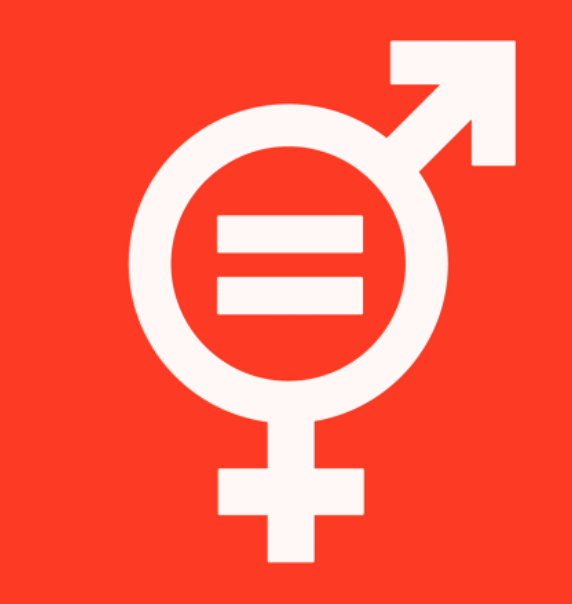
I was raised in the 1980s and 90s by my Finnish parents to aim for any goal I aspired to. Despite my father’s frequent hints that I should become an engineer or go into forestry, and settle down in Finland after growing up in part in Austria, both of my parents supported me in all my endeavours, nudging me to become a financially independent woman. Gender never, ever, played a role in our discussions at home or in school when we spoke about career paths and aspirations.
When I began my studies in economics and political science, and later international relations at the LSE in London, gender studies was one course I consciously avoided. Tarja Halonen had in 2000 become Finland’s first female President (2000-2012), and soon after I moved to Germany, Angela Merkel became Germany’s first female Chancellor (2005-2021). Gender equality was progressing, and women leaders were becoming an accepted norm in many countries. I felt there were more urgent challenges to tackle.
In 2016, with a career and international leadership position at Save the Children, and having had my fourth child the year before, I had changed my mind. Yes, a handful of women leaders existed, but gender inequalities, gender pay gaps, and discrimination were a statistical and proven reality that I worked with daily, and had also begun affecting my own life through the so-called motherhood penalty (in recruitment, promotions, and pay, but also social norms to stay at home with my children). Having worked in security policy for a few years after graduation, I had also learned what it (literally) meant to be the only woman in some rooms.
In 2014, I for this reason founded an initiative to support more women in Germany to have successful careers, but not give up on their hopes to have children. I also began advocating publicly for more women in leadership positions, including for Hillary Clinton during the US Presidential election, Helen Clark for UN Secretary General, and Ngozi Okonjo-Iweala for World Bank President. I began calling for gender quotas, as I saw that progress in politics, and especially in the private sector, was lagging or fully stalling.
Never, though, in my wildest fears, did I expect the reversal in gender equality and women’s leadership positions that has since followed.
Sexual reproductive health and rights are being contested not only in the US, but also in European countries, which in 2023 is resulting in several regional and international agreements stalling or going backwards, not forwards.
Less than 30 (out of 195) countries now have female heads of state or government, and the number keeps falling. Women comprise between 18 and 36 percent of parliamentarians across regions. Women CEOs are in single-digit percentages, and board roles have stagnated at around 25 percent and begun to fall.
In a recent SDG progress report, the UN Secretary-General warns that, at current rates, it will take more than 140 years for women to be represented equally in positions of power and in the workplace. And this assumes progress does not stall further.
During my summer vacation, I read former Prime Minister of New Zealand Helen Clark’s book Women, Equality, Power, which includes selected speeches from her career from 1981 to 2018. Friends of mine, who know that I’ve been worrying a lot about women leaders dropping like flies, and gender equality being backtracked in countries such as the US and Italy, recently gifted me with two books on the role of women in former Eastern and current (unified) Germany (Ostfrauen and Guten Morgen, du Schöne), which I read as well. All three books are stories of progress. Yes, there are challenges, and gender inequalities and lack of rapid progress on women’s leadership is a reality. But things are moving in the right direction, over years and decades.
Helen Clark in her book consistently makes the case that progress on gender equality is linked to having women leaders. Most progress, ranging from issues like reducing gender-based violence or the gender pay gap, or ensuring women have the right to paid maternity leave and affordable childcare, has happened when women lead and make up significant shares in parliament. Without women in leadership positions, we’re unlikely to see gender raised to the top of the agenda.
In my experience, not all women leaders are by default good leaders, nor do all women further gender equality (all alarm bells should be ringing here for Italy’s first and current female prime minister Meloni). Leadership attributes, and most importantly goals and values, are more important than gender, in my opinion. This is why I strongly believe in feminist policy that includes men (and boys), and in value-based leadership. I for this reason also advocate for leadership parity, not matriarchy to replace patriarchy. We need diverse role models for our children and next generations.
Most urgently, we need to halt the reversal we’re currently experiencing on gender equality, including basic women’s and human rights. For this we need to tackle polarisation and extreme right-wing nationalism, which degrades different population groups – often including women – to a category that is subhuman, and not entitled to bodily autonomy and legal rights. We also need to take a hard look at working conditions, which are untenable or even unbearable for working mothers in particular.
Raising my three daughters and one son, I’m trying to give them all the options and hopes for the future that my parents gave me. Without more leaders who are ready to put gender equality back on the highest agenda, this will remain an aspiration. As with climate change, we are currently leaving the world worse off, and on a track of regress, for the next generation. This is our failure, and it is our responsibility to right the current wrongs.